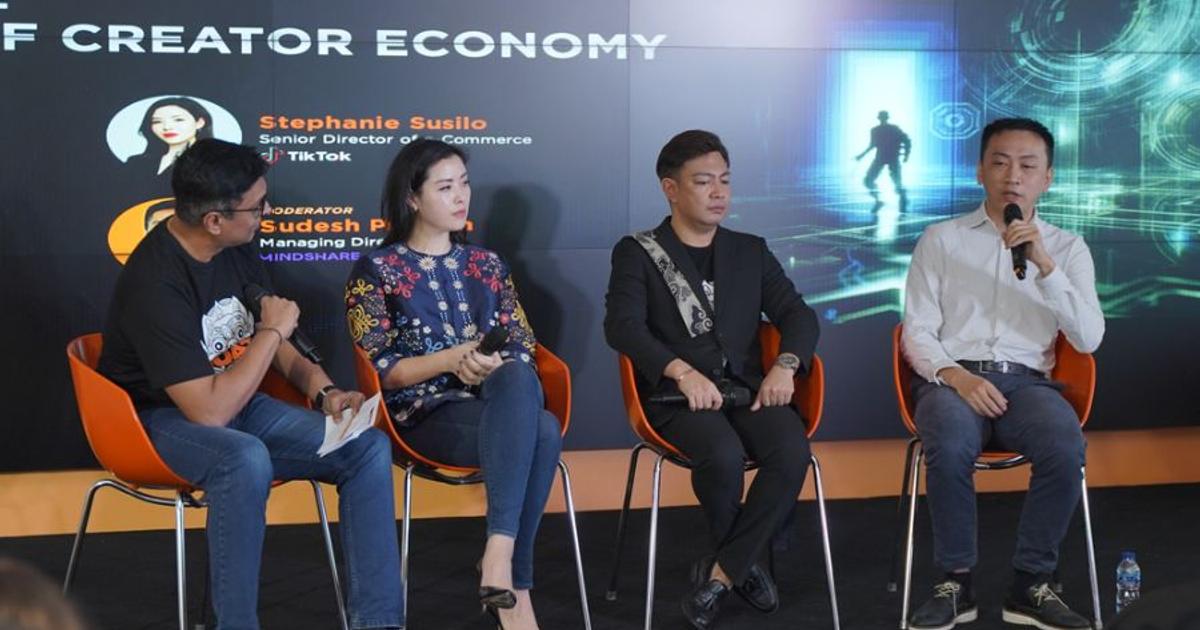Shoppertainment, or content-driven commerce that educates and entertains first, is a $1-trillion APAC business for brands, with the total APAC gross merchadise value (GMV) expected to touch $1.1 trillion in 2025 (up from $500 billion in 2023). Within the region, growth markets like Indonesia, Japan, Korea, Thailand, Australia and Vietnam are expected to see a 63% compound annual growth rate (CAGR), reaching $100 billion in GMV in 2025 from $24 billion GMV in 2023. Of this, Indonesia accounts for 25% of this pie.
These were only some of the astounding figures that Stephanie Susilo, senior director of e-commerce, TikTok shared at GroupM Indonesia’s content day held this week focussing on Indonesia’s social commerce economy.
In a report titled, ‘State of the Creator Economy” released by GroupM-GOAT Indonesia at the event, Indonesia’s creator economy was found to sit at almost 12 million creators who produce 500,000 to one million pieces of content monthly, the highest in Southeast Asia. More importantly for brands, creators were found to be adding value by meeting consumers’ functional and emotional demands and changing the way people shop.
“Collaborations within the creator economy offer a powerful avenue for boosting brand visibility, engagement and conversion,” said Andi Airin, head of marketing, Samsung Indonesia.
There have been shifts in the way consumers are considering, consuming and connecting with brands in Indonesia as they are taking more intuitive rather than impulsive decisions, speakers explained. Further, they are blending browsing and buying effortlessly. Being very price and content-conscious, Indonesian consumers are focusing less on who is recommending or reviewing, but rather what information and deals are communicated by them. Search behaviour is becoming more prevalent on content-driven platforms and the consumers expect these platforms to offer comprehensive product content.
“Indonesian consumers are very community-led and also have the highest FOMO (fear of missing out) quotient in the region which is propelling the social commerce ecosystem in Indonesia,” said Fiona Anjani, chief marketing officer at local beauty brand Scarlett. However, they are now conscious and critical consumers who look for relatable, albeit inspiring content that is within reach, she added.
As per the report, over last three years, there has been a shift from mega to micro and nano creators. Despite micro and macro content dominating overall volume, nano influencers are steadily gaining traction, from a 5% share in 2021 to 11% in 2024. “From one too many, now it’s many too many,” added Anjani.
Brands have to be cognisant about where the consumers’ eyeballs are moving and in Indonesia with the popularity of short-form platforms like TikTok and Instagram by building capabilities fast to address this change. “Measurement—how to marry influencer metrics to long term brand equity— remains unresolved, but we cannot let the boat sail. We have to be where our consumers are,” said Putri Paramita, vice president at Unilever Beauty & Well Being.
Transformative, hybrid and new performance players
Driven by the increasing importance of performance-based results, GroupM’s study suggests that this dynamic content and influencer marketing ecosystem in Indonesia has generated three new breeds of players: Transformative, hybrid and new players, relying on different combinations of creators and affiliate marketers to drive home sales.
Taking the Indonesian beauty space as an illustration, companies like Skintific and Scarlett, the agile beauty brands that have mastered performance-driven creator partnerships, fall in the first category of transformative players. While their content strategy was initially sales heavy but they are now moving to equity building. Social remains their main platform, while traditional media is being used to amplify social.
Seasoned players like Unilever and L’Oreal are the “hybrids” navigating the evolving landscape by integrating affiliate marketing into their existing influencer strategies. The report describes it as “stacking”—layering performance-driven affiliate marketing on top of a foundation of traditional influencer partnerships and brand-building content.
New players are defined by their agility and adaptability. Brands such as Gmeelan and Elformula are quick to jump on trends, experiment with new formats and thrive in the ever-changing social media landscape, where speed and relevance are paramount.
The key takeaway of the report is that the role of influencers has now become full funnel, from awareness and engagement to conversion. Brands must navigate a full funnel approach and select the right type of creators for each objective.
Abhinav Dwivedi, head of marketing, Godrej Indonesia, had an interesting take: “Brand funnels may be good tools for planning but building an investment model purely based on a linear funnel is not realistic as consumers do not make purchase decisions linearly. Godrej Indonesia is investing in affiliate-based marketing, albeit keeping the brand salience and consumer centricity as the guiding factors.”
